Causes of Knee Pain, Treatment Options & Prevention
Knee pain can severely impact the way we go about our daily lives. Daily activities such as walking, running, or sitting down can be challenging due to severe pain. There are many ways to manage knee pain; this includes conservative as well as surgical techniques. Accurate diagnosis and prompt treatment are important to prevent escalation of simple injuries into complex ones.
The common causes of knee pain
Our knee joints are well covered with cartilage and menisci to protect it from general wear and tear. These structures allow the painless and stable movement of our knee through a wide range of movements. While we go about our daily and sporting activities, these protective structures may undergo some injuries and structural changes that cause symptoms such as pain, swelling and loss of function.
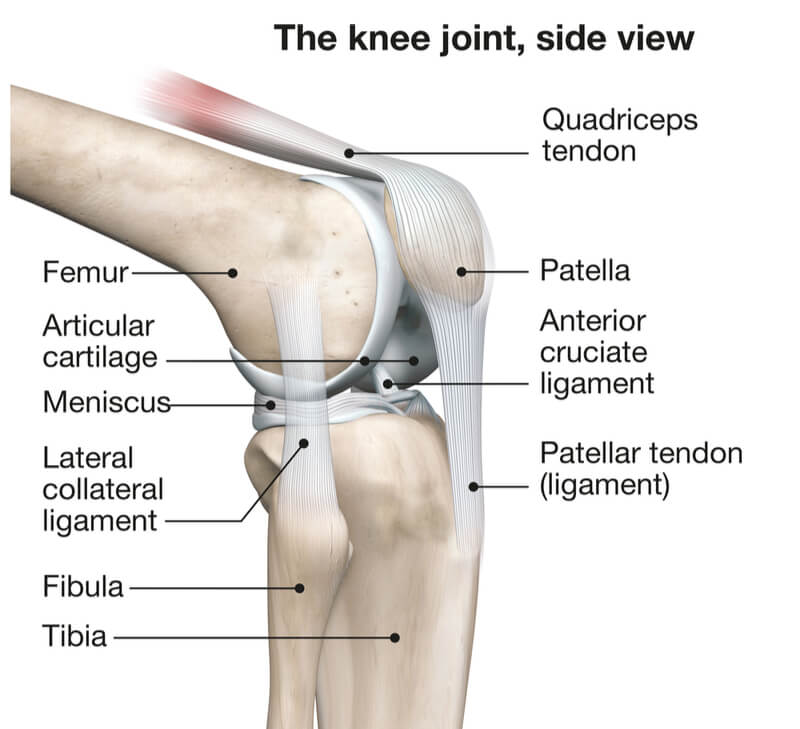
Knee pain is often aggravated by sports injuries. Repeated high-impact exercises over prolonged periods of time can lead to injuries to the knee cartilage, meniscus and ligaments around the knee. This may cause knee pain, swelling and loss of function.
ACL rupture
Common forms of sports injuries to the knee include the rupture of the anterior cruciate ligament (ACL). The ACL connects the femur and tibia bones to give your knee rotational stability when you play pivoting sports such as basketball and football. Athletes who participate in straight-line activities such as running, cycling or swimming may not encounter as many problems with an ACL-deficient knee.
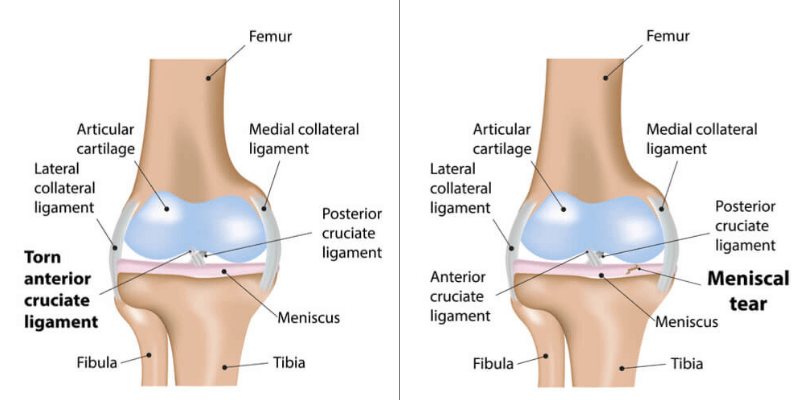
Left: Torn ACL rupture. Right: Torn meniscus.
Meniscus tears
Meniscus tears are a commonly occurring sports injury. The menisci are C-shaped cartilage structures acting as shock absorbers between the femur and tibia bones. A twisting motion with axial pressure may lead to a torn meniscus. Besides swelling and knee pain, a torn meniscus may also cause a ‘locked knee’, an inability to bend or straighten the knee completely.
Runner's knees
Runner’s knee is a common knee injury experienced by athletes and non-athletes alike. It presents as an anterior knee pain due to excessive pressure between the patella (kneecap) and the femur bone (patella-femoral joint). The cartilage covering the patella-femoral joint may also be worn out.
Associated inflammation of the patella tendon and the bursa (pre-patella bursitis, supra-patella bursitis) can also contribute to knee pain.
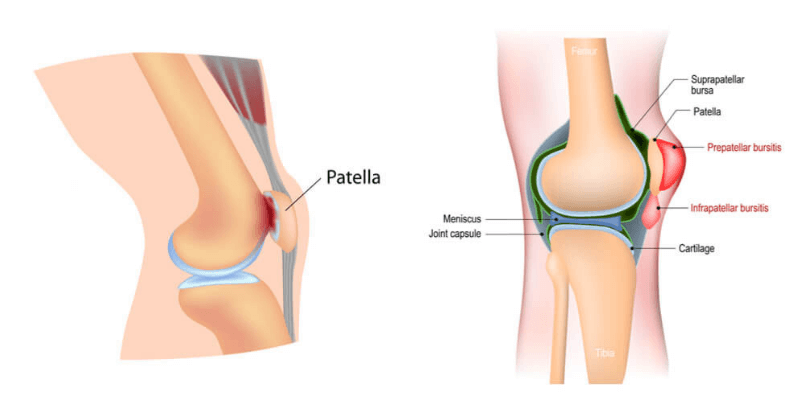
Left: Chondromalacia patella. Right: Bursitis.
The causes of runner’s knee include weakness of the quadriceps muscles, poor running technique and imbalances with your foot (flat feet). Your orthopaedic surgeon and physiotherapist can help to manage your symptoms and guide you back to your active lifestyle with appropriate care and treatment.
Arthritis
Knee arthritis is a degenerative condition where the protective cartilage covering our knee joints are worn out and no longer provide the smooth surface for our joints to move. Patients start to develop a painful grinding sensation in their knees which hampers their daily function. Some even start to develop deformities of their legs such as bow-leggedness and knock knees.
Millions of people around the world are affected by knee arthritis, impacting their basic quality of life and happiness.
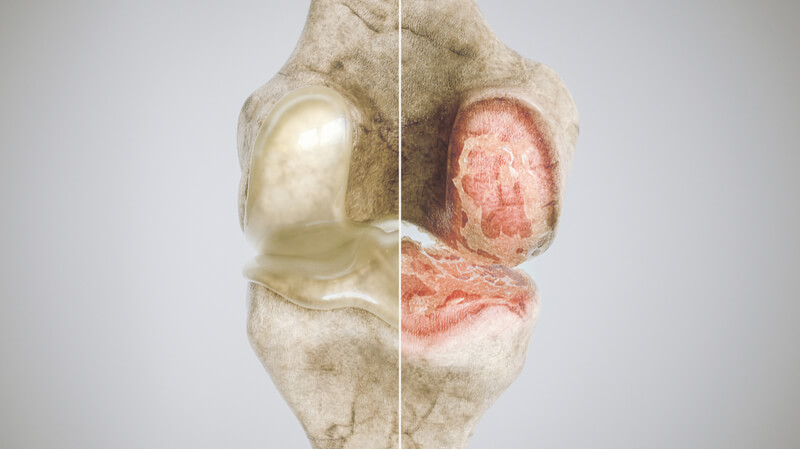
Associated symptoms of knee pain
Knee pain and its associated inconveniences can creep into our daily lives. Many patients find themselves limping or even waddling when they walk to compensate for the crippling knee pain. This can decrease productivity and increased energy expenditure when walking.
Most sports-related injuries lead to knee pain, swelling and stiffness. A common method to manage these symptoms include rest, ice, compression and elevation (RICE). If these methods of managing knee injuries fail to improve your symptoms, you are advised to seek professional medical help.
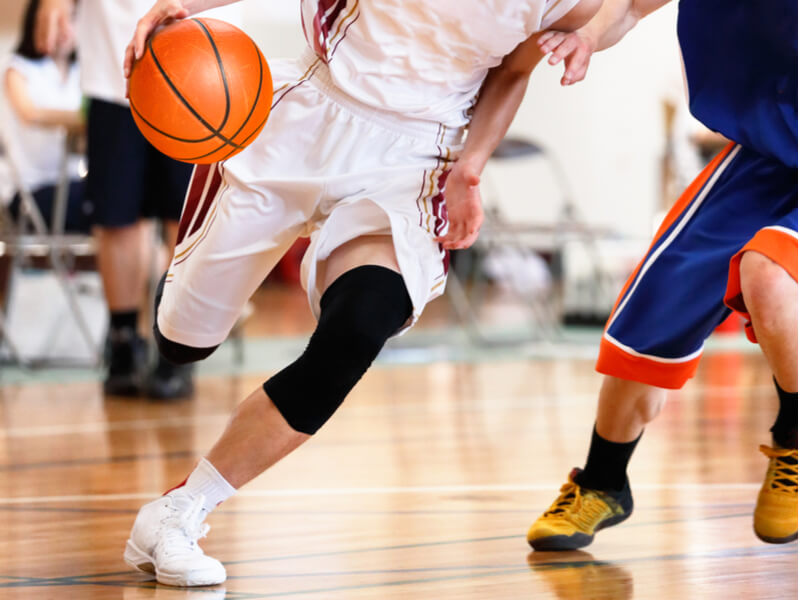
ACL ruptures are frequently encountered in pivoting sports. Athletes may experience a painful sensation or even hear a ‘pop’ when they tear their ACL. This is swiftly followed by knee pain and swelling. It is important to ice the knee when this happens.
Your orthopaedic surgeon will carefully examine your knee and arrange an MRI scan to determine the extent of your injury. Our physiotherapist will work on your quadriceps muscles to ensure they do not weaken with the injury. Professional help is often necessary with ACL ruptures to facilitate a timely return to sports.
Knee injury and arthritis prevention
There has always been a debate between warming up and stretching before exercise. Warming up such as running on the spot or doing push-ups is important to increase the blood supply and oxygen to your muscles before exercise. It allows better sporting performance as well as prevent injuries.
Dynamic stretching such as moving your shoulder, back and knees before exercise is just as important and contributes to your warm-up. Static stretching such as touching your toes to release your hamstring muscles should only be done after your exercise. It helps prevent delayed onset muscle soreness (DOMS) and recovery.
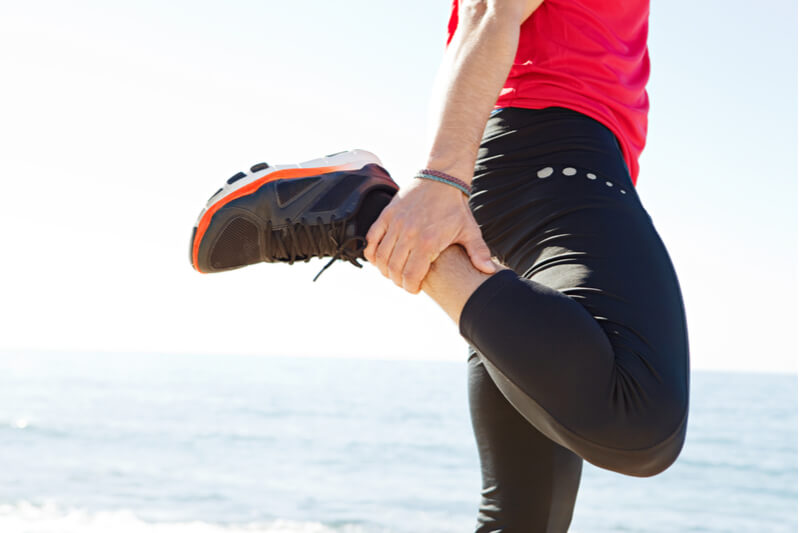
One should always be prepared in terms of sporting equipment and clothing. It helps you enjoy your sport safely and prevent injuries. Pre-sports training and biomechanics is also important in sports such as golf and tennis where repetition of a bad swing can lead to muscle and joint injuries.
The stress on your knees is proportional to your bodyweight. Each time you lose 1kg, it reduces the stress on your knees by 4kg. Current international guidelines actively promote an active lifestyle, aerobic exercises and healthy weight loss to combat knee pain from arthritis.
You know your body best. It is important to know your limits and abilities to prevent injuries. Do not be pressured by those around you who may be fitter, stronger or faster. Exercise safely towards your personal goals.
Treatment options for knee pain
Non-surgical methods of managing sporting knee injuries include oral anti-inflammatory medication and intra-articular knee injections. Pain-relieving techniques such as Platelet Rich Plasma injections facilitate the natural healing process and reduce inflammation.
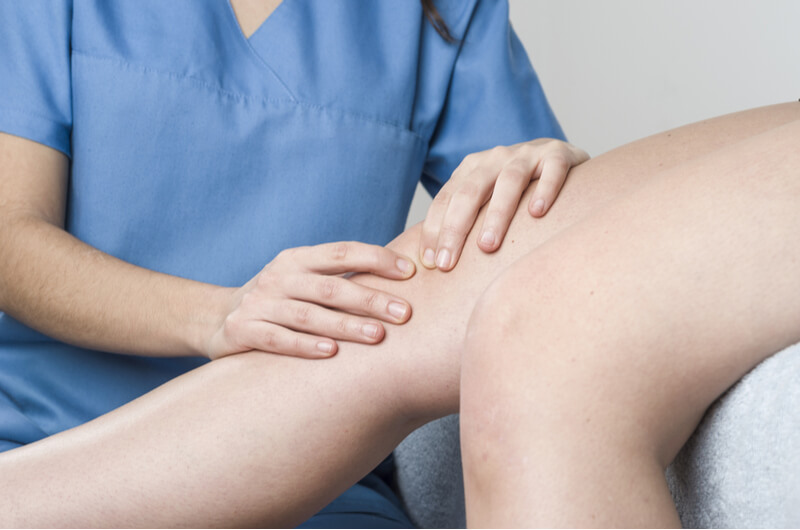
Meniscal injuries and tears do not heal naturally due to its poor blood supply. Depending on the location of these tears, your orthopaedic surgeon may repair them or debride (smoothen its edges) them through a keyhole (arthroscopic) procedure. This would help preserve the integrity of your knee in the long run.
ACL ruptures are reconstructed through an arthroscopic procedure. The new ACL graft is often the patient’s own hamstrings which are known to regenerate after a few years. Patients tend to return to sports one year after their surgery. This is to allow the graft to mature and prevent a rupture of the new ACL graft.
Patients with knee arthritis may require a knee replacement procedure. There are three compartments to the knee and only the worn-out compartment is replaced. In patients who are between 40 to 55 years old with arthritis in only one compartment of their knee, a partial knee replacement (UKR) may improve their pain and overall function. It will allow them to return to work and enjoy an active lifestyle.
Some may require a revision to a full knee replacement in future if needed. Most patients above 60 years old would benefit from a total knee replacement (TKR). Comparing partial and total knee replacements, the former only replaces worn cartilage and torn menisci in one compartment only while the latter replaces the worn-out cartilage throughout the knee and removes both menisci as well. After the initial rehabilitation, patients are encouraged to lead an active lifestyle and indulge in sporting activities such as brisk walking, cycling, tennis, and golf.
Modern technologies such as robot-assisted knee replacement (MAKOplasty®) have also improved the precision of these surgeries and extend the longevity of these implants.
Say "No" to Knee Pain

Prevention is better than cure. Exercising safely within your own abilities is important for your long-term health. Injuries are a part of sport and cannot be avoided altogether. Simple measures are effective in managing common injuries to the knee, although some sports injuries require the intervention of an orthopaedic surgeon.
Early assessment and treatment are key in managing sports and degenerative knee conditions. An accurate diagnosis is always important for you to receive appropriate and effective treatment. Do schedule a consultation with our orthopaedic surgeon at your convenience.
Is it alright to walk around with a sprained ankle?
This depends on the sprain's severity and what treatment has been rendered for the injury. Your doctor may advise you to only put minimal weight on your ankle while it is still recovering from the injury. Excessive walking may lead to more pain and swelling if the injury is stressed too early on.
How do I know if my ankle sprain is serious?
The nature of the initial accident or injury will provide a good idea about how fast it may recover. A serious injury is characterized by severe pain, swelling, and recurrent sprains despite efforts to support and treat it. If you are experiencing these, the soonest visit to the specialist is highly advised.
Can I claim insurance for my ankle injury?
Ankle sprains and injuries are insurance claimable. We do advise our patients to check with their personal or corporate insurance plans and representatives. We are also able to help them with this if required.
What should I do immediately after an ankle sprain while waiting for my appointment and treatment?
Timely self-care with rest, icing, compression, and elevation are important to manage the initial pain and swelling around the ankle. Anti-inflammatory medication will further reduce the pain and swelling that you may be experiencing.
I have more questions, how can I speak to a doctor?
Please call us at +65 6733 4565 (during office hours), or drop us a text or WhatsApp message at +65 9766 4565. We will reply to your queries as soon as we get them. You may also call to make an appointment to see Dr. Mizan for your ankle injury.